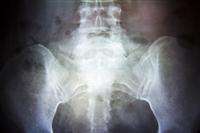(Medical Xpress)—Caesarean section increases the risk of persistent pelvic girdle pain after delivery compared with vaginal delivery, according to a new study from the Norwegian Institute of Public Health.
Caesarean section rates are increasing worldwide, and this trend has partly been explained by women's requests for planned caesarean section without a medical reason. Pregnancy-related pelvic girdle pain has been associated with increased preference for caesarean section and with increased planned caesarean section rates.
"Some women with severe pelvic girdle pain might fear that a vaginal delivery will be too difficult or painful, or will worsen the condition after delivery – even though scientific evidence is lacking", says Elisabeth K. Bjelland, who is a postdoctoral researcher at the Institute's Division of Mental Health and lead author of the study.
Knowledge about how caesarean section affects prognosis of pelvic girdle pain is therefore needed. The purpose of this study was to investigate the relationship between mode of delivery and the persistence of pelvic girdle pain six months after delivery.
In this follow-up study, 79.9% of women had unassisted vaginal deliveries, 6.7% had instrumental vaginal deliveries (by vacuum or forceps), 7.2% had emergency caesarean sections and 6.2% had planned caesarean sections.
Doubles the risk of pain after delivery
After taking a number of other factors into account, the results showed that:
- Planned caesarean section was associated with a two- to threefold increased risk of severe pelvic girdle syndrome (severe pain over the frontal part of the pelvis and on both sides of the rear part of the pelvis) six months after delivery.
- In women who used crutches in pregnancy, both emergency and planned caesarean section was associated with severe pelvic girdle syndrome six months after delivery.
- Instrumental vaginal delivery was also associated with an increased risk of pelvic girdle syndrome six months after delivery.
Clinical advice
When deciding the mode of delivery, clinicians should be aware of the increased risk of non-recovery after caesarean section among women with severe pelvic girdle pain.
"Our findings, which support previous assumptions, do not indicate that caesarean section represents a benefit for the process of recovery from pelvic girdle pain. If there are no medical reasons for a caesarean section, the findings suggest that vaginal delivery is the safest option for women presenting with severe pelvic girdle pain", advises Bjelland.
More information: Bjelland E.K., Stuge B., Vangen S., Stray-Pedersen, B. and Eberhard-Gran, M. Mode of delivery and persistence of pelvic girdle syndrome 6 months postpartum. Am J Obstet Gynecol (2013); 208
Provided by Norwegian Institute of Public Health


















